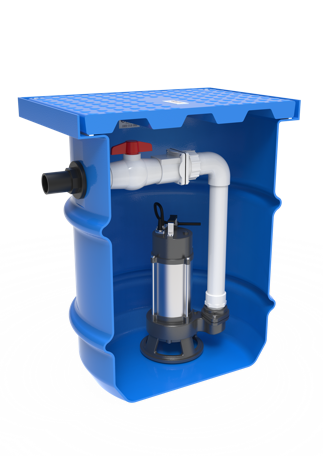In the realm of household appliances, there are a few that never really bask in the glory of their effectiveness until a crisis hits. The sump pump is one such unsung hero that quietly safeguards your home from the perils of water damage and basement flooding. While it may not be as glamorous as a shiny new kitchen appliance or a state-of-the-art entertainment system, the sump pump plays a critical role in protecting your property and ensuring your peace of mind.
The concept of the sump pump is simple yet ingenious. Installed in the lowest part of your basement or crawl space, it consists of a pump placed in a pit, often referred to as the sump pit. When excess water accumulates in this pit, typically due to heavy rains or melting snow, the pump activates automatically to remove the water and prevent it from seeping into your home. This efficient mechanism can save you from the headaches and financial burdens associated with water damage repair.
One of the primary functions of a sump pump is to combat basement flooding. When heavy rain or flooding occurs, groundwater can infiltrate your basement, leading to not only structural damage but also health hazards like mold and mildew growth. Without a sump pump, your basement could easily turn into an unwelcome aquatic habitat. However, with a properly functioning sump pump, excess water is promptly expelled, keeping your basement dry and habitable.
Moreover, sump pumps are particularly vital in regions prone to heavy rainfall or with a high water table. Without this safeguard, properties in such areas are at constant risk of groundwater intrusion, which can result in a multitude of issues, from damaged belongings to compromised foundations.
Aside from preventing basement flooding sump pumps also help mitigate the risk of structural damage. Prolonged exposure to moisture can weaken your home's foundation and structural components, ultimately leading to costly repairs. By swiftly removing excess water, a sump pump ensures that your property remains structurally sound and retains its value over time.
There are two main types of sump pumps: submersible and pedestal. Submersible pumps are placed directly in the sump pit, submerged in water during operation. They are quieter and more discreet but tend to be more expensive. On the other hand, pedestal pumps have the motor mounted above the sump pit, making them easier to access for maintenance. While they are typically less expensive than submersible pumps, they tend to be noisier.
Maintaining a sump pump is crucial to its continued effectiveness. Regular inspections and cleaning can prevent clogs and ensure that it functions when needed most. Additionally, having a backup power source, such as a battery-powered pump or a generator, is essential in case of power outages during storms when the sump pump is needed the most.
For More Info:-






Comments